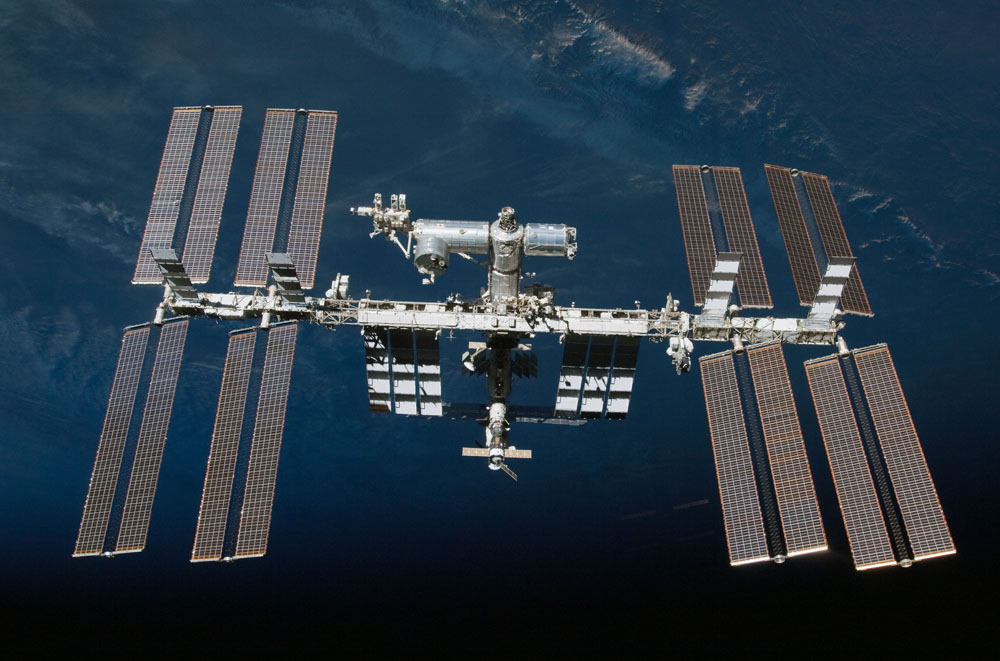Space Station Wins Prestigious Collier Trophy

The International Space Station program has won a prestigiousaviation award — the 2009 Collier Trophy — in recognition of its strides in advancingaeronautics.
The prize was granted by the National Aeronautic Association(NAA), and announced Wednesday.
'We are honored to receive this prestigious award,"said Bill Gerstenmaier, associate administrator for NASA's Space OperationsMission Directorate. ?We're proud of our past achievements to build and operatethe space station, and we're excited about the future ? there's a new era aheadof potential groundbreaking scientific research aboard the station."
Five space agencies and 15 countries jointly operate thenearly complete InternationalSpace Station, which will mark the 10th anniversary of a continuous humanpresence in orbit later this year. The space station represents the largest andmost complicated spacecraft ever built.
Designated as a national laboratory by Congress in the 2005NASA Authorization Act, the ISS provides microgravity conditions 220 miles (354km) above the Earth's surface for research in many fields, including human lifesciences, biological science, human physiology, physical and materials science,and Earth and space science.
A diverse six-person crew currently lives onboard thestation, which possesses a mass of almost 800,000 lbs (363,000 kg) and ahabitable volume of more than 12,000 cubic feet (340 cubic meters) —approximately the size of a five-bedroom home. The ISS uses state-of-the-artsystems to generate solar electricity, recycle nearly 85 percent of its waterand generate much of its own oxygen supply. Nearly 190 humans have visited thespace station, now supporting its 22nd resident crew.
About 150 experiments are currently underway on the station,and more than 400 experiments have been conducted since research began nineyears ago.
Breaking space news, the latest updates on rocket launches, skywatching events and more!
The international partner agencies — NASA, the CanadianSpace Agency, the European Space Agency, the Japan Aerospace Exploration Agencyand the Russian Federal Space Agency — provide control centers and supportteams that train and launch crews to the station, provide support for systemsoperations and coordinate the on-orbit research around the clock.
The NAA awards the Robert J. Collier Trophy annually"for the greatest achievement in aeronautics or astronautics in America,with respect to improving the performance, efficiency, and safety of air orspace vehicles, the value of which has been thoroughly demonstrated by actualuse during the preceding year."
"I believe that the International Space Station is awonderful example of what the Collier Trophy signifies: accomplishment,vision, and advancement in aerospace," said Walter Boyne, chairman of the NAA.
Robert Collier commissioned the trophy in 1910, to encouragethe American aviation community to strive for excellence and achievement inaeronautic development. Mr. Collier was an aviator, humanitarian, andsportsman, as well as a publisher whose family created the popular magazine Collier'sWeekly.
In recognizing the worth and future of aviation, Mr. Collierproclaimed the ideal that, "the flying machine should be unselfishly andrapidly developed to its ultimate potential for economic advancement inAmerica." Collier was the first person to purchase an airplane from theWright brothers for personal use. He loaned his aircraft to the U.S. Army forflight evaluations at Fort Sam Houston in San Antonio, Texas, which led to thefirst military orders for a flying machine.
The International Space Station team nomination included NASA,The Boeing Company, Charles Stark Draper Labs, Honeywell Corporation, LockheedMartin Corporation, United Space Alliance, and United Technologies Corporation.
Other nominees for the 2009 Collier Trophy included: Aircell,Ares I-X Flight Test and Ares I design teams, C-5M Super Galaxy, KandaharAirfield Operations team, MC-12W Project Liberty Enterprise team, SpaceXFalcon 1 development team, and John Warner and the Excalibur UnmannedCombat Air Vehicle.

